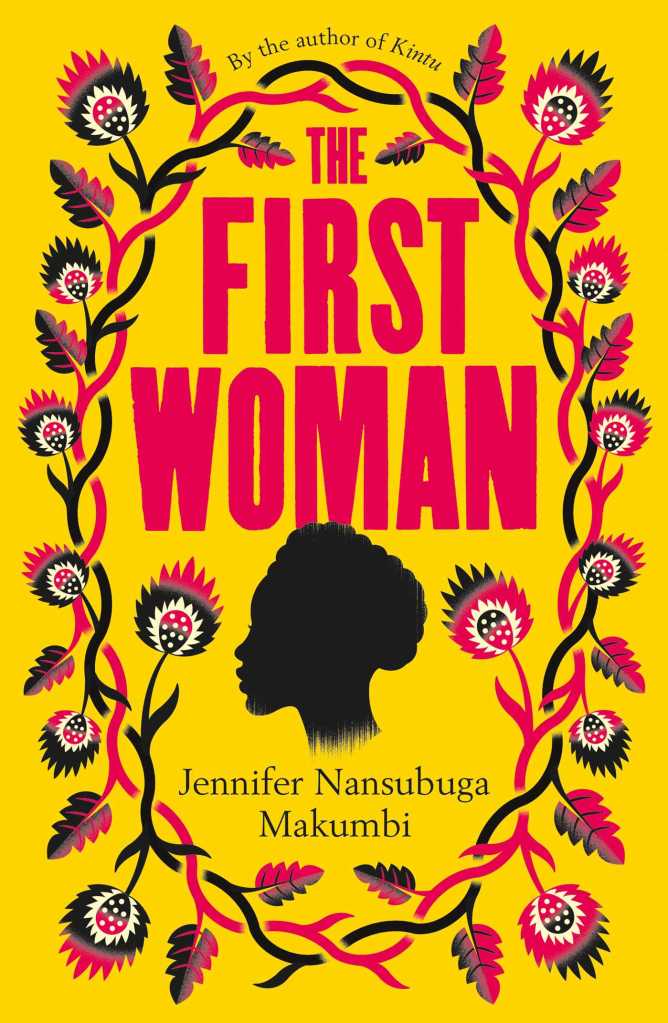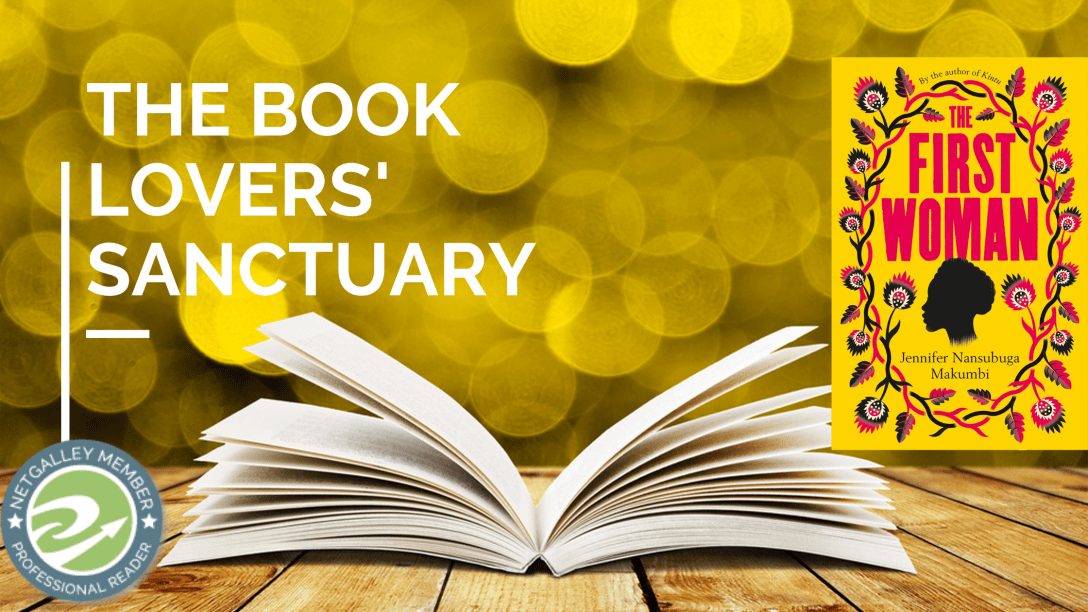
As Kirabo enters her teens, questions begin to gnaw at her – questions which the adults in her life will do anything to ignore. Where is the mother she has never known? And why would she choose to leave her daughter behind? Inquisitive, headstrong, and unwilling to take no for an answer, Kirabo sets out to find the truth for herself.
Her search will take her away from the safety of her prosperous Ugandan family, plunging her into a very different world of magic, tradition, and the haunting legend of ‘The First Woman’.
‘Stories are critical, Kirabo,’ she added thoughtfully. ‘The minute we fall silent, someone will fill the silence for us.’
Meet Kirabo Nnamiiro: Ugandan, a member of the Ganda tribe, twelve years old and living with her grandparents. She is precocious and courageous enough to insist on telling stories to the teenagers, her aunts and uncles, who come to live with her grandfather to be educated; she is vulnerable enough that the question Where is my mother? cut her “like razors”.
Kirabo is a wonderful creation and a charming character to spend time with in the novel as we bear witness to her progression from from child to adult. Initially we meet her as she is living with her grandparents – Alikisa and Miiro – in their rural, traditional village life in Nattetta in May 1975. She transitions then to her father Tom’s modern house in Kampala with his second wife and their children, to a boarding school and back to Nattetta again at the age of 19. This is her journey to discovery of her self, to discover what it is to be a woman in Ganda culture, what it is to negotiate the traditional and the colonial.
The novel is in many ways split between the traditional and the modern, just as Uganda itself was split between its traditional cultural heritage and its colonial, international identity. Through Kirabo, Makumbi unfolds her depiction of village life in a wonderfully natural and organic way. We meet the village and the culture as we see Kirabo negotiating her relationships with Alikisa and Miiro, with her best friend, Giibwa, and lover, Sio, with the local community embodied in the gossipy Widow Diba, and Ssozi the local shopkeeper. We learn of Miiro’s eminence and status in the village, of the deeply patriarchal societies, of the limited ambitions open to women.
Above all, we meet Nsuuta, Kirabo’s grandmother’s ancient rival, whose “feud was Mount Kilimanjaro”, and whom the village has deemed a witch. Kirabo seeks her out because – in what might be a magic realist twist or perhaps a depiction of a form of epilepsy – she has out-of-body experiences, her spirit floating up to the ceiling or the sky and she hopes that Nsuuta’s witchcraft can help heal her. Nsuuta, however, views the experiences as proof that Kirabo is in the state of the mythical first women, free and powerful. This first original state was
wonderful for us. We were not squeezed inside, we were huge, strong, bold, loud, proud, brave, independent.
Nsuuta claims to be able to rid Kirabo of this first state, but refuses to do so until she has learned all the facts about it to be able to make an informed decision. This image of the First Women and of an indiginous, Ugandan, embedded fight for the rights of women or, to use the Lugandan word, mwenkanonkano was deeply compelling – contrasting with the English word feminism which Kirabo generally dismissed as “for women in developed countries with first-world problems”
Alongside Nsuuta’s teaching, Kirabo also learns something of the feud between her and her grandmother. For me, the image of the First Woman, of men’s use of story and myth to diminish and control her, was the head in the story, the mind, the appeal to thought; the rivalry and relationship between Aliksia and Nsutta, however was the heart of the novel, appealing to my emotions. The power of the feelings between these two older characters, their passion was powerful – and I loved the flashback to the 1940s where we saw the equally powerful and passionate bond between the two. The question rises early – how will Makimbo resolve this conflict? It was resolved beautifully in the final chapters.
There are parts of the novel which are heavy with exposition and meditations on the effect of colonialism on Uganda – the impact of European conventions on time and dates for example, or the difference between urban and rural poverty – which did detract a little. Where Makimbo was strongest was in her more subtle depictions of the society. Kirabo and Giibwa are seen playing dolls and Kirabo has a
plastic doll, a present from Aunt Abi who lived in the city. The doll rolled its eyes up-down, up-down, like a bulb flickering. When she turned it, a cry emanated from the back, under a lid labelled made in china.
Giibwa, however, “had moulded hers out of mud”. The disparity between their classes becomes an insurmountable barrier in their friendship, and this small detail in the opening chapters became hauntingly potent.
Similarly, Idi Amin’s regime coincided with the timescale of the novel and it is there, quietly and subtly impacting on and affecting the communities of both St Theresa’s school and Nattetta. A threat that came closer and closer to Kirabo as Sio’s father “disappeared”, Miiro and Ssozi had to hide in the brush, there was a threat that they might come for Tom and Amin’s thugs, food at the school became scarce. But even here, Makimbo found humour: the presence of soldiers around the school that gave the girls the opportunity to flirt in order to access their ration packs and chocolate!
An army officer would be patrolling, minding his own business, and would find himself accosted by a group of girls: ‘Affande, thank you for liberating us. Yii, but you are very brave. Now, we were thinking, can we look at your military ration pack?’
Makimbo is also bluntly honest about the physicality of being a woman in Uganda: the rivalry between Giibwa and Kirabo included resentment that Giibwa’s breasts developed earlier and we see the girls comparing them ; we hear Aunt Abi’s advice and Sio’s dislike of labial elongation. We hear about periods – and it seems shocking to say that this honesty and frankness, neither romanticising nor demonising them, remains unusual in the 21st century! The effect of cancer on Nsuuta’s body and on her breast later on in the novel
Whilst there are powerful ideas about colonialism, women, feminsim or mwenkanonkano, class, poverty and power, what made this stand out for me was that, alongside this, there was a wonderfully generous and warm hearted humour, supported by some delicious language, and a wonderfully humane, non-judgemental stance. This was one of those books in which, by end, I found that I had fallen in love with almost everyone.
What I Liked
- Kirabo, whose growth into a confident, mature, strong young woman was exceptionally well presented in the novel.
- The characters throughout the novel, all of whom were rounded and authentic and felt “real”.
- Makumbi’s beautifully judge humour and warmth, which mediated some of the brutality and hardships, some of the oppression and challenges faced.
- The utter unsentimental, non-judgemental attitude of the novel
What Could Have Been Different
- Slightly less exposition in the novel – it never dragged on, it never took me out of the reading but there were passages and pages that felt a little heavy on the history and the exposition.






[…] Uganda of Jennifer Nansubuga Makumbi ‘s The First Woman […]
LikeLike
[…] loved The First Woman, set over two generations in Uganda as modernity and traditional value come into conflict, and a […]
LikeLike
[…] The First Woman, Jennifer Nansubuga Makumbi […]
LikeLike